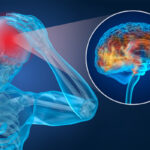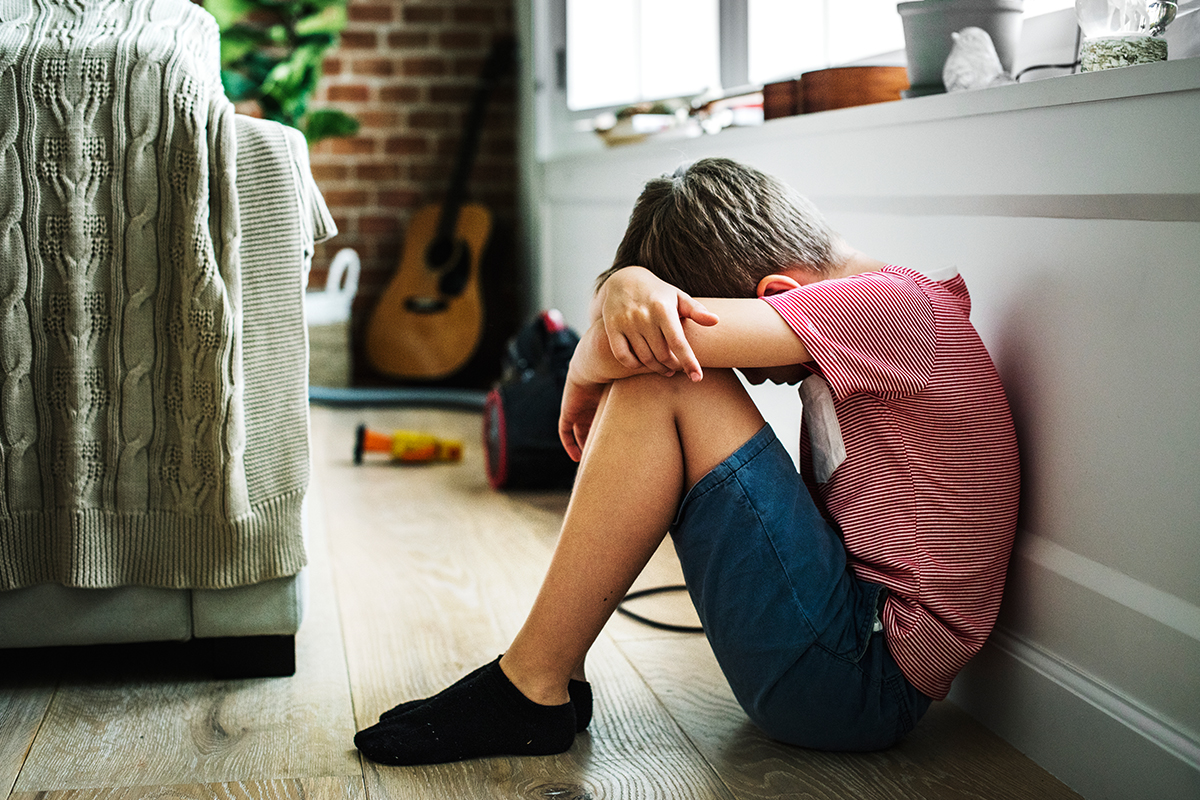By Ari Goldstein
Most of us think of childhood as a time of freedom from responsibility, playtime and school yard crushes – when every day is full of fun, happiness and exciting new discoveries. But for all too many children, childhood is seen in shades of blue and gray instead of sunlit pastels. Far from being trouble-free, it is pervaded by an all- encompassing feeling of sadness, unremitting stress and a sense of helplessness to change the situation. Worse, sometimes these feelings are so overwhelming the only escape seems to lie in suicide.
Depression in children isn’t new. But perhaps we’ve become more aware of it today and examples of it have gained attention through social media in a way that was not possible before. We hope that this increasing level of awareness will enable parents, health care professionals and educators to help these troubled children as soon as possible.
Why do some children suffer from depression?
We still don’t know exactly why depression strikes children but there seems to be a combination of factors involved. These are related to physical health, family history including genetic makeup and biochemical changes in the brain. The first acknowledged onset of depression may be triggered by a specific event such as the breakup of the family from divorce or the death of a close family member or friend. And in today’s complex world there can be many other contributing factors. For examples, kids may suffer from low self-esteem due to ADHD, a learning disability, being overweight or just have problems relating to their peers that lead to an unremitting feeling of sadness.1
In some cases, depression runs in families afflicting one generation after another. Two examples of this that come immediately to mind are the Roosevelts and the Hemingway family. Despite their incredible success, various members of these clans killed themselves after struggled through years of alcoholism, and a constant sense of sorrow.
Signs of Depression in Children
Children often find it difficult to express how depression is affecting them. For one thing, they may not realize that what they’re feeling isn’t what everyone else is experiencing. For another, their verbal skills may be still developing. If they are autistic or learning disabled in other ways, this problem may be compounded. All children can have sad days or throw a temper tantrum. But if this behavior continues for two weeks or longer for most of the day and interferes with normal activities, it could signal that a child is suffering from depression. Here some of the signs parents, care givers and educators should take note of in kids ages 3 to 122:
• Frequent irritability with sudden bursts of anger that come out of the blue for no reason
• An extreme sensitivity to criticism
• Avoiding people they are normally close to – parents, grandparents and friends
• A lack of enthusiasm for activities they used to love
• A general lack of energy throughout the day
• A negative view about things they used to like
• Describing themselves in negative terms – for example, ‘I’m not good at anything’ or ‘No-one at school likes me”
• Blaming themselves for things that go wrong – even if they are obviously innocent
• Physical complaints – “my stomach hurts” or “my head aches”
• Nightmares
• Trouble focusing at school
Depressed teens may exhibit slightly different versions of these behaviors including self-harm activities such as extreme dieting and physical cutting. It may start with a change in their daily routines and include3:
• Trouble sleeping or is sleeping more than normal
• Loss of appetite or, in contrast, binge eating
• A hard time concentrating
• Problems making decisions
• Drop in school grades, attendance, not doing homework
• High-risk behaviors, such as reckless driving, unsafe sex, or shoplifting
• Pulling away from family and friends to be alone
• Drinking or using drugs
Fortunately, depression can be treated.
Depression is a very serious condition but today we have several highly effective ways to treat it, even in very severe cases. Here’s a brief description of two of the therapies most frequently used – medication and talk therapy.
Medication
Several different types of medication are used to treat depression and it is often a case of trial and error before the best prescription or combination of medicines can be found for a patient. Everyone’s depression is individual and, to a certain, extent, the same is true of their treatment. Since anti-depressants often need to be taken for several weeks before they are fully effective, finding the right therapy takes patience. In addition, stopping one medication to switch to another has to be done gradually or the patient may experience symptoms of withdrawal, making the depression worse. Here are some examples of prescriptions frequently given to treat depression4:
• Selective serotonin reuptake inhibitors (SSRIs). These drugs are considered safer and cause fewer side effects than other types of antidepressants. They include citalopram (Celexa), escitalopram (Lexapro), fluoxetine (Prozac), paroxetine (Paxil, Pexeva), sertraline (Zoloft) and vilazodone (Viibryd).
• Serotonin-norepinephrine reuptake inhibitors (SNRIs). Examples of SNRIs include duloxetine (Cymbalta), venlafaxine (Effexor XR), desvenlafaxine (Pristiq, Khedezla) and levomilnacipran (Fetzima).
• Atypical antidepressants. These medications don’t fit neatly into any of the other antidepressant categories. They include bupropion (Wellbutrin XL, Wellbutrin SR, Aplenzin, Forfivo XL), mirtazapine (Remeron), nefazodone, trazodone and vortioxetine (Trintellix).
• Tricyclic antidepressants. — These can be very effective, but tend to cause more-severe side effects than newer antidepressants so they are usually prescribed after SSRI therapies have failed. They include imipramine (Tofranil), nortriptyline (Pamelor), amitriptyline, doxepin, trimipramine (Surmontil), desipramine (Norpramin) and protriptyline (Vivactil).
• Monoamine oxidase inhibitors (MAOIs). MAOIs are also drugs that are tried after other prescriptions have failed. They can serious side effects and the patient must adhere to a strict diet while on them because they can dangerous interactions with certain foods. These include tranylcypromine (Parnate), phenelzine (Nardil) and isocarboxazid (Marplan). Selegiline (Emsam) is a newer MAOI that sticks on the skin as a patch and seems to cause fewer side effects than other MAOIs do.
But these medications may not work the same way for younger patients as they do for adults.
Although most medications are safe for adult patients, some have been known to cause children, teenagers and young adults under 25 to experience suicidal thoughts. These patients seem to be especially vulnerable in the first few weeks after starting a drug or when the dose is changed. The U.S. Food and Drug Administration (FDA) strongly suggests that all patients taking antidepressants be watched closely, especially during the first few weeks of treatment.5
In the past, mental health issues in children were not recognized the way they are today and pharmaceutical companies were understandably reluctant to use children as test subjects. While our knowledge about how children react to depression medication is still growing, pharma companies, the FDA and the medical community are now more aware of what can help kids and what may pose a danger to them.
While medication can be a tremendous aid in treating depression, it still only relieves the symptoms, not the cause. Furthermore, we still don’t know the long term effect of these medications on children and most healthcare professionals are reluctant to prescribe medication for children for lengthy periods.
Talk Therapy is the most effective long term treatment for depression
Medication for depression is usually prescribed by a licensed psychologist or psychiatrist as part of their own going treatment of a patient. There are several different approaches that professionals can take to treat depression including cognitive-behavioral, interpersonal and psychodynamic therapy. All of them are designed to help the patient identify the situations that contribute to their condition and then learn how to deal with these issues more effectively. 6
Yet Talk Therapy can be difficult for some young patients.
Young children may find it hard to express their feelings in words. They may not have the vocabulary or enough experience to put their feelings into context. Fortunately, therapists who work with young patients have techniques to help them overcome this barrier. Another factor therapists have to deal with in treating younger patients is finding ways to connect and work with their patient’s parents, siblings, care givers, teachers and anyone else who plays a significant part in their life. Treating children is by necessity always a team effort, starting with the children themselves.
Although depression may be brought on by a particular event such as a job loss or divorce, an episode may indicate that the patient is at risk for future problems even after treatment. Research suggests that ongoing psychotherapy lessens the chance, or at least reduces the intensity, of future episodes. 6
Neurofeedback. Another option for treating depression in children
Neurofeedback is another therapy that is being used to treat depression both in adults and children with ever growing frequency. It may be the only therapy a patient is prescribed or it may be used in conjunction with talk therapy and/or medication.
Because neurofeedback has no major side effects and can be used by people of all ages, even if their verbal communications skills are limited, it is in many ways, ideal for treating children. For one thing, research indicates that neurofeedback can enhance the effectiveness of certain medications, allowing smaller doses to be used for a shorter period of time. This can be especially helpful in cases where unpleasant side effects are interfering with a patient’s comfort, digestion and ability to sleep.
Recent research carried on in the United Kingdom by Dr. David E.J. Linden of the Mental Health Research Institute, National Center for Mental Health at Cardiff University in Cardiff, UK indicates that neurofeedback based on functional magnetic resonance imaging (f-MRI) holds particular promise for treating depression.7
Since f-MRI covers the whole brain, it can map functionally connected networks and extract information from distributed activation patterns. Dr. Linden has found, that “the fMRI technique is particularly powerful in mapping correlates of mental states…which deal predominantly with altered states of thought, emotion and behavior.” It has also demonstrated a higher degree of accuracy pinpointing locations of brain activity and affords better access to deep brain structures.
Linden claims that symptoms of depression can be broadly grouped into four domains – emotion regulation, cognition, motivation and homoeostasis – and that fMRI can help in the search for the biological mechanisms of depression.
He also postulates that depression can be caused by a patient’s general low sense of agency and loss of control over their environment. Since using neurofeedback enables patients to self-regulate their brain, this can have a very positive effect. As linden says, “…successful control over one’s own brain activity could give patients a sense of agency and particularly the experience that their own brain activity is constructed, rather than imposed.”
Here is Linden’s description of one of the studies he undertook testing the effects of neurofeedback on depression. “We tested eight patients, all with a longstanding history depression. They were informed that the areas they trained to upregulate had been associated with positive emotional pictures, but no specific strategy was suggested to them. Most patients started their attempts of upregulate the target areas by imagining pictures, which included serene landscapes and uplifting sporting scenes. However, most of the them reported at debriefing that it worked better to try and evoke positive images that related to themselves, for example, memories of happy events. In a psychotherapeutic sense, the neurofeedback training may have helped them engage with positive aspects of their own lives. The clinical effects of the pilot study were also promising. The patients in the neurofeedback group improved by about 30% on their symptom score over the 1-month trial…whereas a control group, which performed emotional imagery for the same duration outside the scanner, did not improve at all.”
If you’d like to learn more about how neurofeedback can help you or your child deal with depression, please feel free to call us for more information any time. Even if another therapy is currently being used, neurofeedback might still be a useful addition to treatment.







